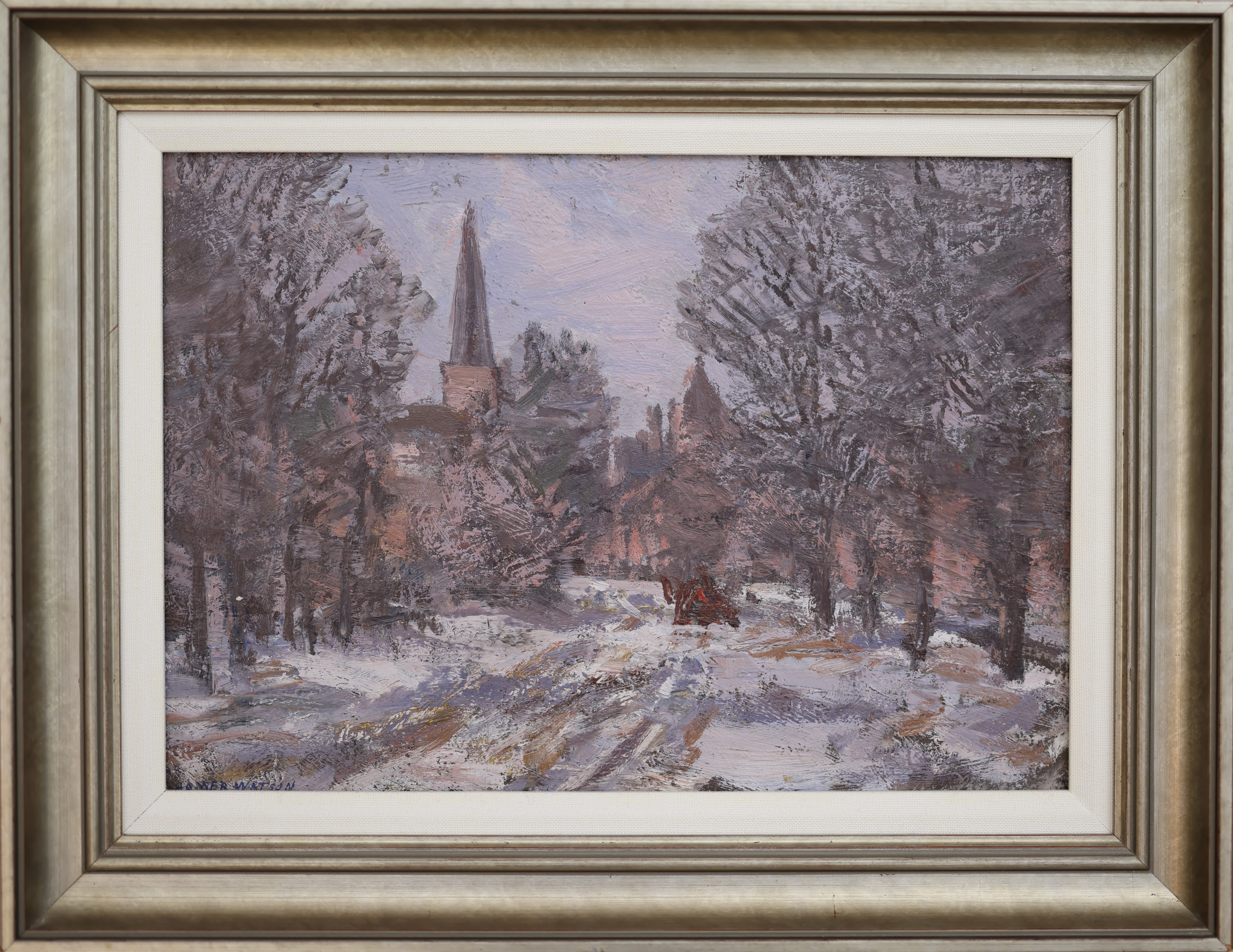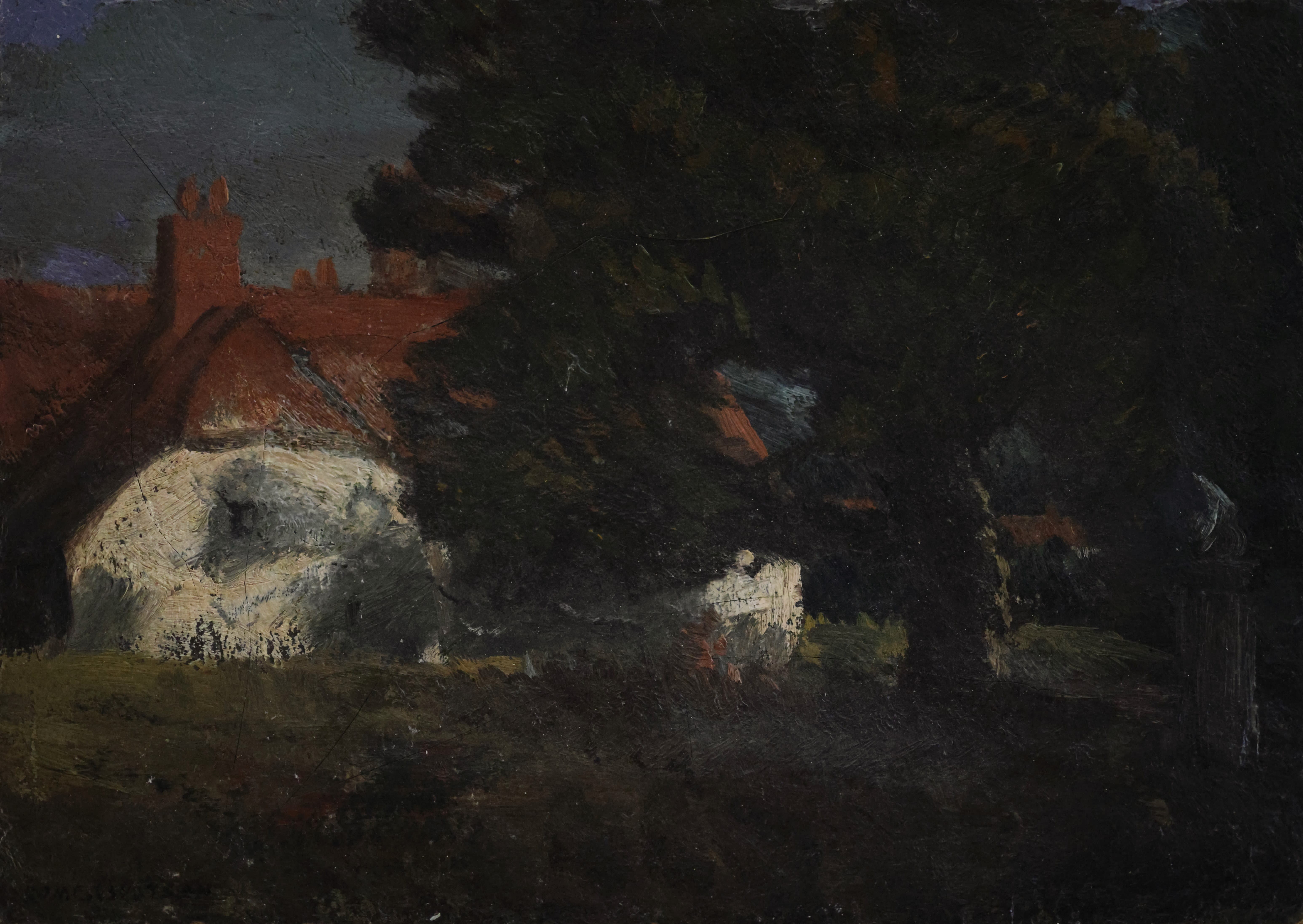Homer Ransford Watson (January 14, 1855-May 30, 1936) was a Canadian artist known for his significant contributions to the country's artistic heritage. Born in Doon, Upper Canada (now Kitchener, Ontario), Watson's early life was marked by the loss of his father when he was just six years old. Despite this early hardship, Watson's innate talent and passion for art were evident from a young age.

Homer Watson; Goderich Church
A self-taught artist, Homer Watson was encouraged to paint at an early age by both his teacher and his aunt. His upbringing in the small town of Doon, with a population of only 150 at the time, instilled in him a deep appreciation for nature and the Canadian landscape. His early years were characterized by a voracious appetite for learning, fueled by an inheritance of a library of books that played a pivotal role in shaping his artistic sensibilities and honing his drawing skills.

Homer Watson; Road Below Galt
In 1874, Watson made a significant move to Toronto, a city that would become a vital center for his artistic growth and recognition. Despite limited formal training, he immersed himself in the art community of Toronto, spending time at the Toronto Normal School and the Notman-Fraser photography studio.

Homer Watson; Sunset Grove
Travel played a crucial role in influencing Watson's work. During a trip to New York in 1876, he absorbed the influence of Barbizon school pioneer George Inness and the Hudson River School. A subsequent move to England in 1887 exposed him to the work of influential European painters such as Jean-Francois Millet and John Constable, further enriching his palette.

Homer Watson; Oak Tree and Farmhouse
Watson's paintings are celebrated for their luminosity and mythic quality, often depicting the Canadian countryside with a romantic yet realistic touch. He became known as one of the first artists to paint Canada as Canada, capturing the unique identity and natural beauty of his home country.
In addition to his prolific painting career, Watson played a crucial role in shaping the art community in Canada. He co-founded the influential Canadian Art Club in 1907 and served as its first president. Watson was also an early president of the Royal Canadian Academy of Arts.

Homer Watson; Cressman's Woods
Despite facing financial challenges in his later years, including the loss of his life's savings in the stock market crash of 1929, Watson's legacy endured. He continues to be admired by Canadian collectors and critics alike, and his work remains an integral part of Canada's artistic heritage.
In recognition of his immense contributions to Canadian culture and heritage, Homer Watson was designated a Person of National Historic Significance. His paintings are cherished for their portrayal of Canada's physical nature and early pioneer life, reflecting a deep reverence for the land and its people. Today, the Homer Watson House & Gallery stands as a testament to his enduring legacy.



